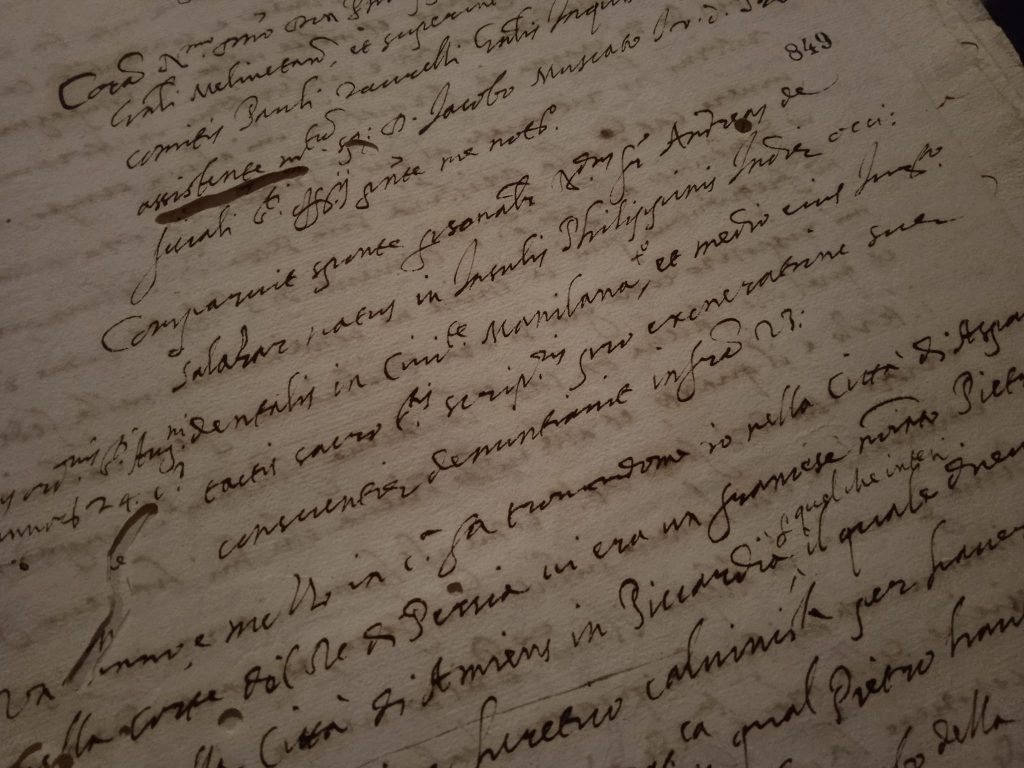
The testimonies documented in the Inquisition archives are full of emotional narratives that reflect movement and Mediterranean connectivity. Like this example were an Augustinian friar, born in the Philippines, travelled through Persia and then to Malta via Alexandria; and on the way met a French embroiderer who was in the service of the Persian King also travelling westwards. When both in Malta the Augustinian reported the Frenchman for his Protestant ideals. In view of the feast of St Paul’s shipwreck, that too is a journey that reflects the experience of travellers but also Malta’s strategic location in facilitating East-west connectivity.
A curious reference to a perfumery which existed in the piazza of Valletta and was owned by a certain Gio.Domenico in 1622. In front of such a shop a regettier would set up his stall and on one occasion was taken to the Holy Office for having snatched a meat pastizzo from a slave who passed by carrying a tray of those delicious snacks.
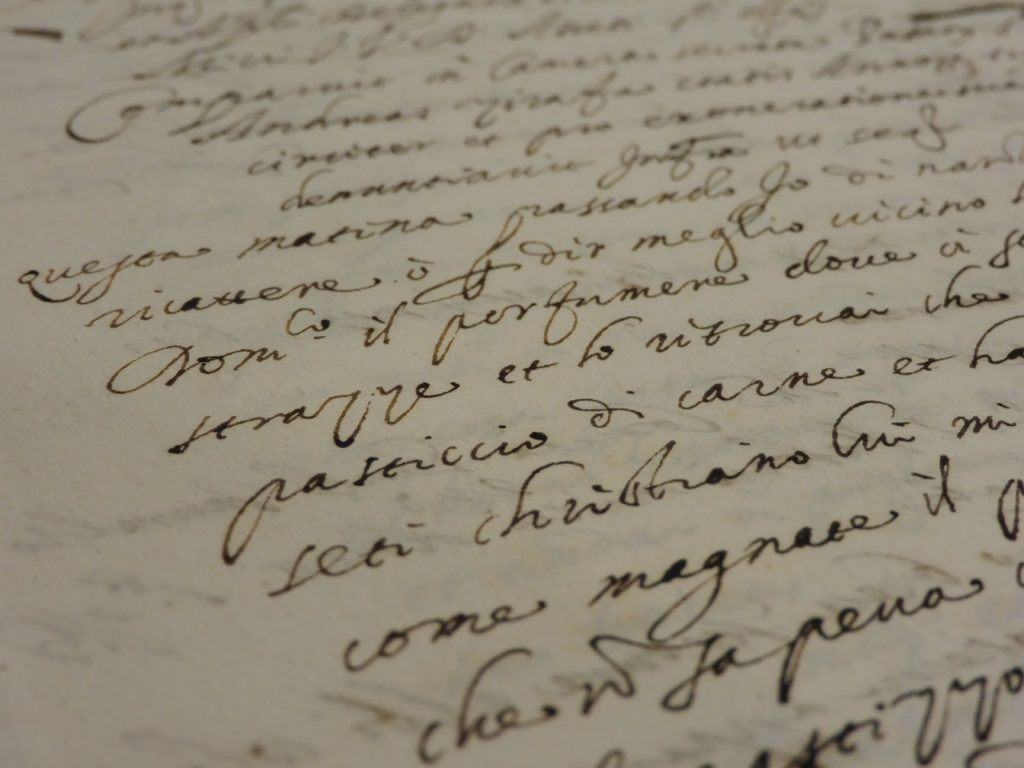
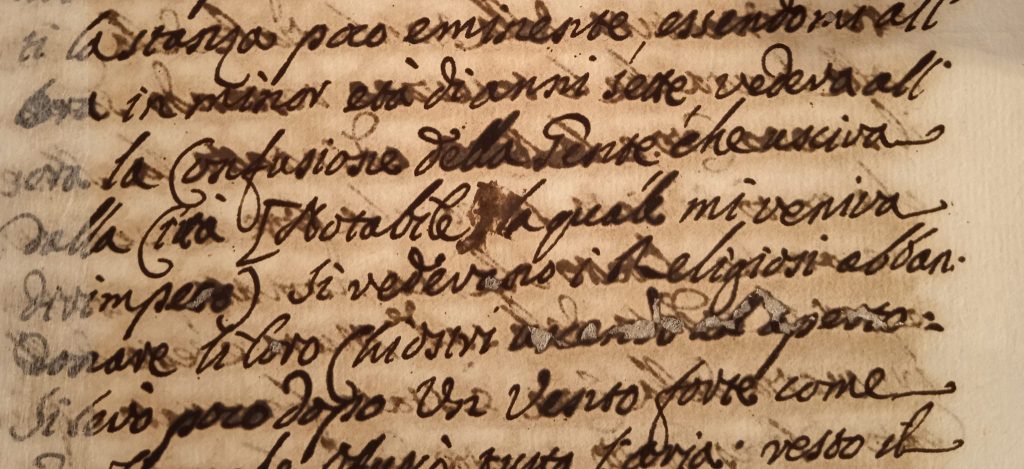
11th January 1693 …”vedevo all’ora la confusione della gente che usciva della Citta Notabile…dopo, un vento forte come turbine che offuscio’ tutta l’aria; resto il vento per tutta la notte e per tutta la notte si sentivano scosse”
First hand account of the earthquake that shook Noto, Ragusa and Malta. In this account we also find reference and sketches to the damage caused to Malta’s Sicolo Norman Cathedral and it’s newly constructed choir.
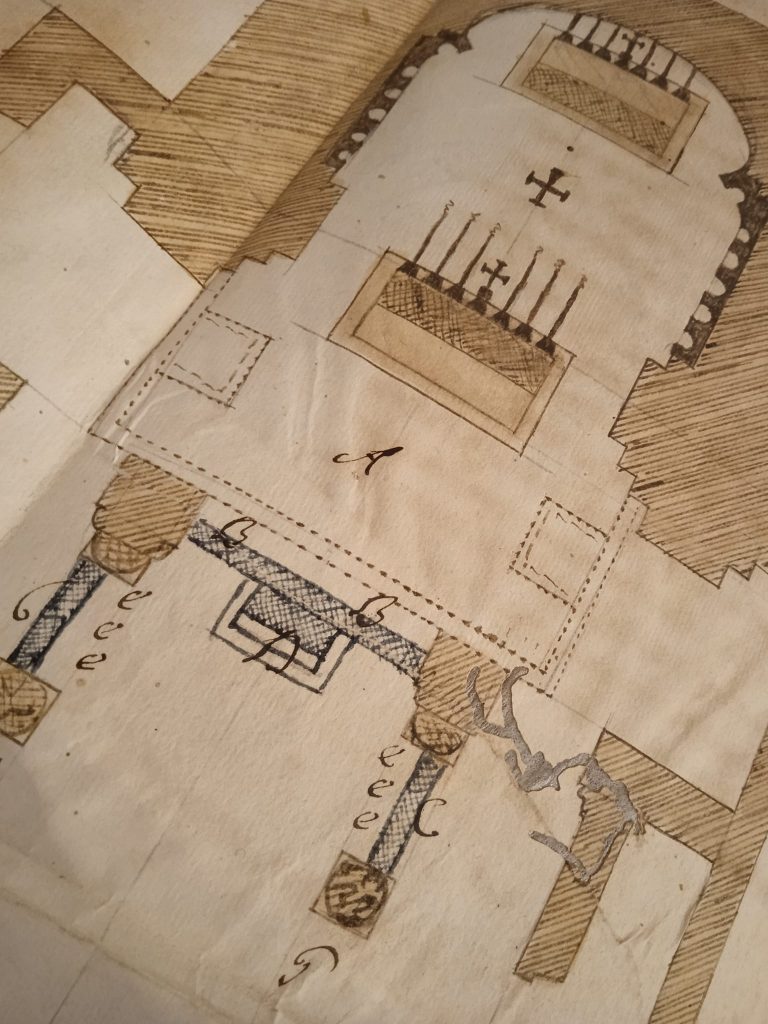
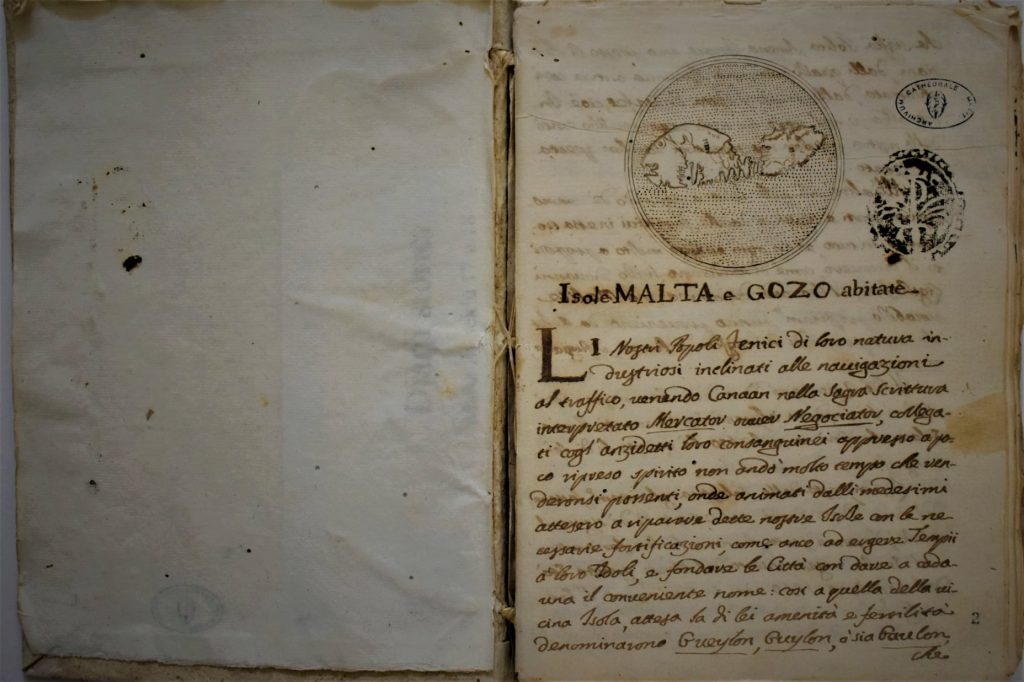
A mid 18th century handwritten manuscript by a Maltese historiographer Don Bartholomeus Mifusd (later Padre Pelagio) who is considered as one of the most knowledgeable persons about Malta and its antiquities. Besides this, he studied medicine and most probably graduated as Doctor in Arts and Medicine. Most of his manuscripts are conserved at the Cathedral Archives of Mdina, Malta.
Probably the earliest reference to the cave of Ghar Hasan (‘gar chasan’) dated 1624; mentioned in a testimony report in an Inquisition proceeding against a priest of the Parish of Zurrieq. This would mean that the toponym tied to the tragic legend of Hasan and his female victim definitely predates the 17th century.

